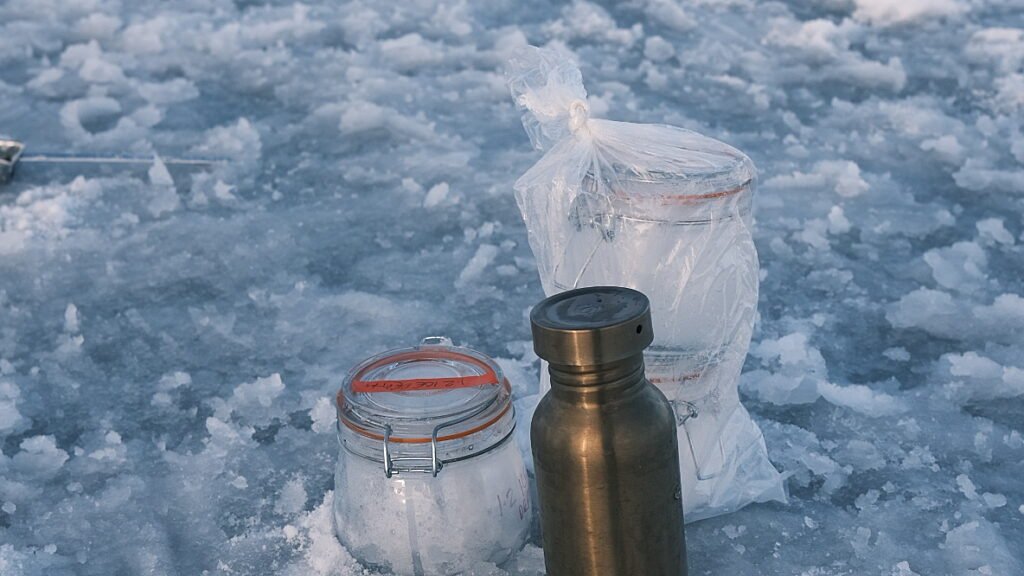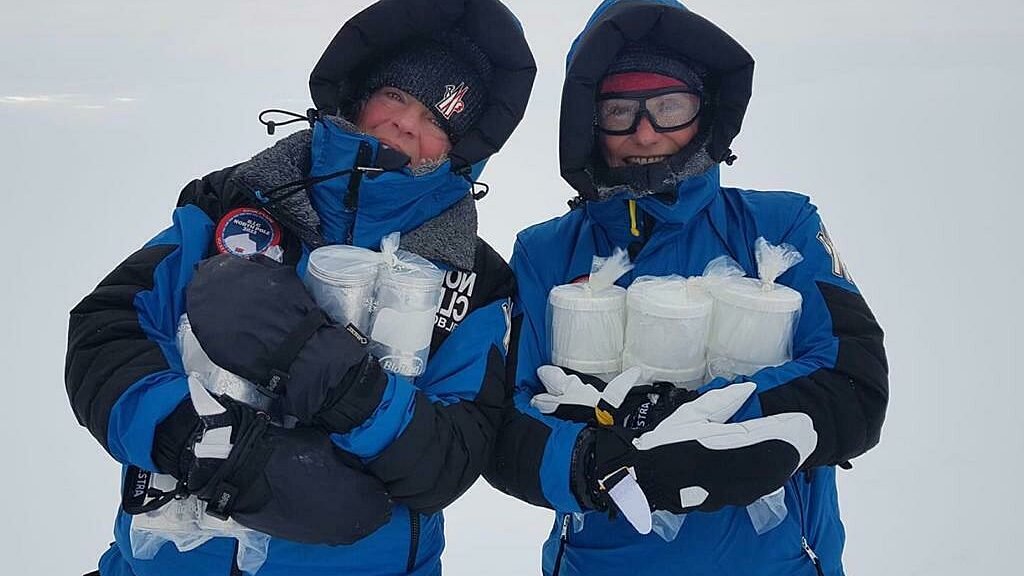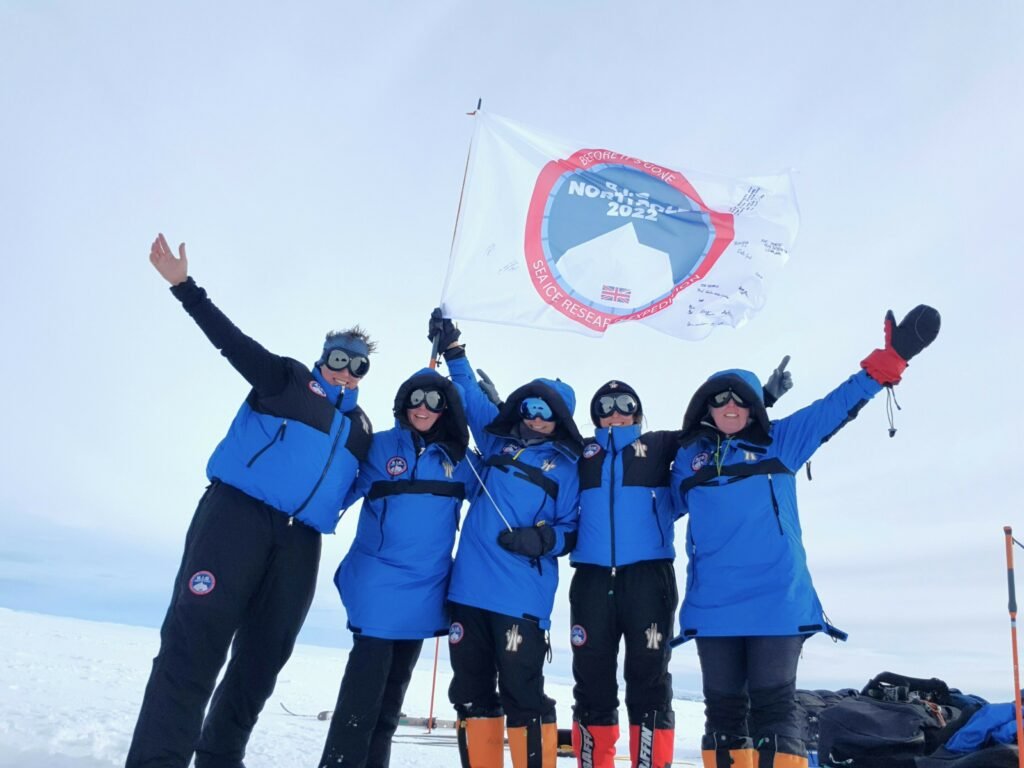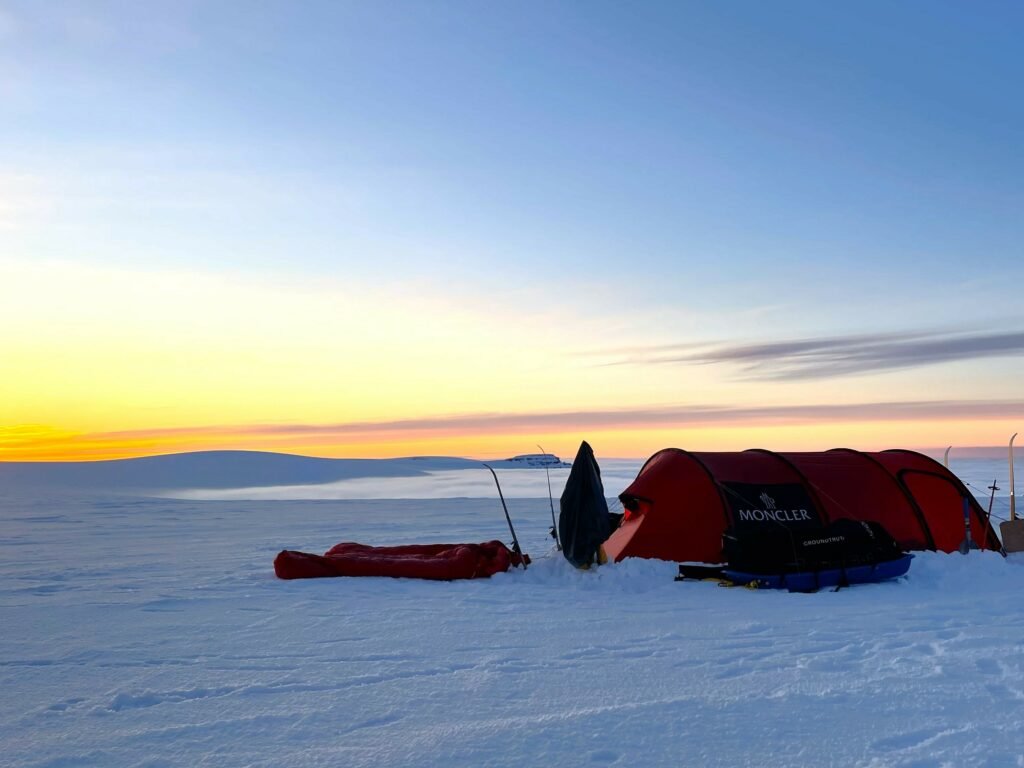Home / The Science
Arctic snow and ice research
We need to understand this environment better - Before It's Gone
It is the alarming speed at which the Arctic is changing that makes our need to understand this environment so urgent.
Since the monitoring of Arctic Ocean sea ice by satellite began in 1979, there has been observed a clear trend of decline. It is not just that there is much less sea ice, it is also the case that what ice is there is thinner, newer and less stable.
The rapid and extensive change to an environment that is critical to fundamental global climate systems such as ocean currents and atmospheric circulation will have far-reaching consequences for everyone on planet Earth, affecting every aspect of life.
“The polar regions are becoming increasingly affected by man’s activities, while research in these areas is extremely difficult. Collecting samples to find out the level of pollution poses major logistical problems and we are thrilled to give support to Felicity and the B.I.G team in looking at pollution from plastics and lead. The Microplastics Research Group at NOC typically works in the Atlantic and some coastal rivers but with Felicity now in the group and leading this expedition, our reach is massively expanded and will enable us to have a much better understanding of the magnitude of this pollution and the processes by which the material reaches this far flung part of the planet.”
PROFESSOR RICHARD LAMPITT, RESEARCH SCIENTIST, AT THE NATIONAL OCEANOGRAPHY CENTRE
Even as it disappears, there is much detail we still do not know about this unique environment.
The need for data is particularly acute because the accuracy of the computer models we rely on to predict climate change and future climate, as well as to unpick the causes and impacts of the climate and environmental change that has already taken place, depends on the quality and extent of the initial data provided.
The B.I.G team aims to collect data for several critical research studies throughout the expedition in collaboration with scientific experts…
1. Black Carbon
Black carbon is a form of pollution that results from the incomplete burning of fossil fuels. There are anthropogenic sources such as vehicles, shipping and industry as well as natural sources such as wild fires. The resulting black carbon can be transported around the world by the atmosphere and deposited far from its source.
Black carbon can be carried into the Arctic where it can be deposited on snow and ice. There, it can contribute to increased melting because it is a material that absorbs light to a greater degree than other particles that might be present. It is thought the black carbon on sea ice absorbs light and therefore melts the snow and ice around it.
Little is known about the spatial and temporal distribution of black carbon deposited from the atmosphere across the Arctic region and in particular on glaciers and sea ice. This information is particularly crucial when it comes to using computer models to accurately recreate conditions in the Arctic and therefore be able to provide greater understanding of the changes taking place in the past and present as well as predicting possible future outcomes.
The expedition will be collecting snow and ice samples under the guidance of Dr Ulyana Horodyskyj at the University of Colorado, which she will later analyse for levels of black carbon. This information will be used to gain a greater understanding of the distribution of black carbon across the Arctic and will contribute to a growing dataset from remote regions across the world including K2 and Antarctica.
Listen to Dr Ulyana Horodyskyj Pena talk about her work on Black Carbon:
2. Microplastics
It has been known for some years that marine microplastics are being frozen into Arctic sea ice but it is only relatively recently that attention has been given to the transport of microplastic by the atmosphere. The distribution, pathways and processes connected to this form of pollution is still not well understood, nor the consequences to environment, climate and human health.
By looking for microplastic deposited on Arctic snow and ice via the atmosphere, we can begin to understand the scale of the issue as well as begin the process of understanding sources, pathways and longevity of any airborne microplastic deposited across the Arctic and the impacts this might be having.
Snow, ice and water samples – as well as supporting data – will be collected from Arctic glaciers and Arctic Ocean sea ice of varying age during B.I.G. expeditions to give a broad insight into the pattern of distribution across the Arctic region and in a variety of specific environments. So far, sampling has been done on Arctic Glacier snow, Arctic Ocean Fast Ice and will be completed on Arctic Ocean Pack Ice in 2024.
The samples will be analysed for microplastic content using infrared spectroscopy at the National Oceanography Centre and the University of Southampton in the UK. Techniques are being developed to best quantify and identify any plastic materials found in the samples.
Listen to Felicity Aston talk about her research into microplastic content in Arctic snow and ice:
3. Arctic Clouds
Under instruction from Dr Ulyana Horodyskyj at the University of Colorado, the expedition will be making Arctic cloud observations using the NASA GLOBE Observer app.
As Dr Horodyskyj writes, "Clouds are a major component of the Earth’s system that reflect, absorb and scatter sunlight and infrared emissions from Earth, which affects how energy passes through the atmosphere. Different types of clouds have different effects and the amount of cloud cover is also important. Clouds can change rapidly, so frequent observations are useful to track these changes. This citizen science data collection effort involves photographing clouds, recording sky observations and comparing them with NASA satellite data using the GLOBE Observer app on a smartphone. Given the perspective from the ground, looking up, these types of photographs help refine satellite-derived models and enhance scientific understanding of Earth’s atmosphere. With the app, you can check the timing of satellite flyovers for your locations and set notifications for making observations."
Not only will the team be making these observations throughout their expeditions but you can also contribute - simply search for the GLOBE Observer App and follow the given instructions to get started….
4. Community Snow Observations
The expedition will be recording snow depth throughout their journeys as part of the Community Snow Observations Citizen Science Campaign
The Community Snow Observations citizen science project aims to improve our understanding of snow depth variability. On-the-ground measurements aid interpretations of satellite and airborne snow measurements collected by NASA and other agencies. Snow data help improve water runoff models. Predicting and understanding variability in water runoff is important due to effects on snow avalanche hazards, water resources, tourism and impacts of a changing climate. Providing key in-situ field observations to create a baseline of information for the Arctic, where it is notoriously challenging to tease out snow depth is highly valuable.
5. Positive Psychological Outcomes in Spaceflight Analogs
Our team psychologist Dr Laura Thomas is investigating the factors that contribute to positive psychological outcomes (salutogenesis) following exposure to a space analog environment and examining how these outcomes might change over time. Some of these positive after-effects can be long lasting and reflect deep psychological shifts in our values, motivations, and attitudes. It is these types of experiences that Laura is researching as part of our expedition.
A space analog environment refers to any isolated, confined, or extreme (ICE) environment where the effects of living in space are replicated to some degree, such as The North Pole! Space analogs are stressful by nature because the environment is unpredictable, hazardous to health, and countermeasures are required to perform many everyday tasks that we take for granted, such as breathing.
Her research is part of a larger study that will act as a test bed for future research at PARSEC Spaceflight into other analogs of spaceflight and ultimately spaceflight itself! Our scientific partner PARSEC Spaceflight specialises in selecting, training, and certifying professional civilians to become the next generation of first-class astronauts and mission control personnel for commercial space operations.
PARSEC Spaceflight | Commercial Space Operations (parsec-spaceflight.com)
6. Psychology of Resilience
The expedition contributed to a study being conducted by Paul Burgum at the University of Durham to investigate how resilience in extreme environments may be explained using broad theories in psychological science.
Self-determination theory proposes that the fulfillment of basic psychological needs can predict a person’s resilience in such environments. His current research will explore if this is supported in the Polar regions by the experiences of expedition teams.
7. Field-testing custom-engineered equipment made from recycled and sustainable materials by our Sponsor GROUNDTRUTH
The expedition is working with, and supported by, GROUNDTRUTH in field-testing innovative and pioneering new materials made from carbon emissions and recycled plastics, as well as custom design.
GROUNDTRUTH is founded on a commitment to innovate, and the drive to move the recycling industry forward. Working with a specialist textile mill in Taiwan, they have created a unique and bespoke new 100% recycled fabric. Their high-performance GT-RK-001 textile is manufactured from 100% recycled PET, using plastic waste collected from landfill sites, waterways and oceans worldwide. With a 600 denier ballistic yarn structure for premium strength, a unique triangular ripstop weave, and a water-repellant TPU coating, it offers unparalleled durability and resistance to the elements.
Every Groundtruth product proudly displays the number of plastic bottles that have been removed from the ocean and repurposed within its fabric.
In addition Groundtruth have collaborated with Expedition Air and Polycore to develop the use of materials made from carbon dioxide emissions. Through world-leading Carbon Capture and Utilization technologies, the zips and even ink used in products not only use carbon dioxide emissions extracted from the air but they also displace carbon-intensive materials that are used to manufacture conventional products.
The Expedition will be using equipment that utilises these new innovations as well as new Groundtruth custom design of items such as sledge bags and emergency slings. The team is proud to support such pioneering innovation for the future.
Read more at groundtruth.global
“We are proud to support this incredibly important expedition to the North Pole, which will provide vital scientific data to further our understanding of the affect of air pollution on climate change and the melting of our polar ice caps”
- EVOTECH AIR QUALITY




















